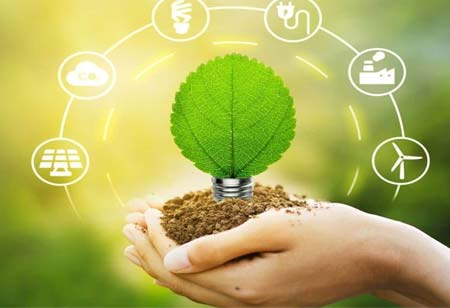

Thank you for Subscribing to Energy Business Review Weekly Brief

Despite all its challenges, 2022 saw the emergence of countless innovations that could be applied to help deliver a sustainable future. Experts assess these trends and pick out key focus areas where technologies could transform in 2023.
Even with the new year's dawn, the pandemic remains a significant threat worldwide. Energy and food supply to Europe and beyond are still being impacted by Russia's war in Ukraine. According to experts, 2022 will likely go down in history as the UK's warmest year and the fourth-warmest year overall, with 2023 looking to be even more generous. People in the sustainability realm understand that many of the answers to these problems already exist and have positive effects on the environment, society, and the climate. Inventors are already at work on products, systems, projects, and processes that hint at potential greener futures. Innovative Retrofitting Solutions Since the summer of 2021, energy costs have been rising across Europe, with the biggest jumps occurring in February after Russia invaded Ukraine. According to the International Energy Agency (IEA), this has encouraged increased investments in renewable energy and energy efficiency. However, European countries have been frantically searching for substitute fossil fuel sources and prices have kept rising. It benefits everyone to increase energy efficiency. The surplus energy is sometimes said to be the least expensive and highest in carbon. Families' expenses are also reduced by energy-efficient homes, which strengthens the rationale for installing cleantech fixtures like heat pumps and residential solar panels. With all of this in mind, the UK, the EU, and other markets are establishing new energy efficiency goals. The performance and initial cost of physical products like heat recovery systems, home energy storage, heat pumps, and prefabricated panels may also change significantly over time. Consider underfloor insulation robots from Q-Bot, which have already finished more than 2,000 installations in the UK, which is an emerging topic for innovation. Low-carbon Industrial Materials According to the World Green Building Council, buildings are responsible for 39 per cent of all energy-related carbon emissions worldwide. The majority of these emissions are operational, but a third of the total originate from materials and construction, which are equally substantial. The United Nations predicts that on a business-as-usual trajectory, the use of raw resources for construction will double by 2060. Climate targets are challenged by the fact that steel, concrete, and cement are already substantial sources of world emissions, necessitating the development of novel low-carbon materials. Hydrogen Trains This past year, hydrogen was undoubtedly a burning issue for sustainability experts. The direction of travel for scaling up production is established, with governments committed, through the Breakthrough Agenda, to bringing low-carbon hydrogen to cost parity with fossil (grey) hydrogen this decade. The optimum uses for this hydrogen are currently the subject of heated debate. This time last year, an IRENA assessment found that hydrogen should be prioritised in industries that are difficult to electrify, like steelmaking, shipping, and long-distance transportation for large vehicles. Lawmakers on the Science and Technology Committee last month came to the same conclusion and issued a warning against the use of hydrogen in cars and homes. Rail is one application for hydrogen that is developing quickly. In August 2022, the world's first hydrogen passenger train began operating in Hamburg, Germany. The train can go 600 kilometres on a single charge and is propelled by a combination of hydrogen fuel cells and supercapacitors. Its top speed is 160 kmph and it is modelled after current Fuxing high-speed trains. Additionally, the UK is creating HydroFLEX, a historic hydrogen train that has received mainline approval. Following initial tests, Porterbrook and the University of Birmingham demonstrated the train at COP26. Although it has not yet confirmed mainline tests, ScotRail is also investigating hydrogen-retrofitted trains. Lithium-free Energy Storage A study from KU Leuven in Belgium published in April 2022 found that there just isn't enough lithium in the world to enable the world's energy system to become net zero by the year 2050. The study concluded that up to 35 times, as much lithium as is currently used each year might be needed for the shift. Representatives of the fossil fuel business have utilised this discovery to, predictably, oppose the energy transition. Next-generation energy storage technologies, however, are being developed and improved by inventors to alleviate the pressure on the world's lithium resources. A wide variety of technologies are in development, from gravity-based systems to Finland's operational sand-based heat storage batteries. Sodium-based batteries are a possible replacement for lithium-ion for energy storage applications requiring lower amounts of energy. To increase the longevity and lightness of lithium-ion batteries, some inventors are considering replacing the graphite in the batteries with silicon. Urban Renewable Energy Generation Although both megatrends are developing simultaneously, inventors are considering how to integrate renewable energy generation arrays into built-up areas. For instance, companies are in an effort to develop bladeless turbines that may be put atop sizable structures with flat roofs. The turbines are made to be silent when operating and may be linked directly to a building's electrical supply. On the roof of a structure, it normally mounts 20 to 40 turbines on the side that experience the most reliable wind. Solar films, which can be mounted to exterior roller blinds to provide solar arrays for any home, are another illustration of innovation in urban renewable energy.
I agree We use cookies on this website to enhance your user experience. By clicking any link on this page you are giving your consent for us to set cookies. More info